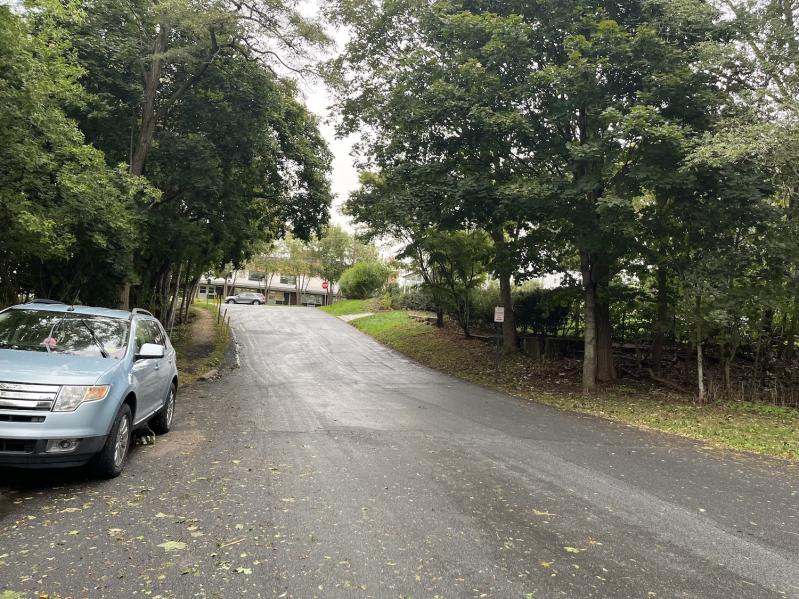The Sag Harbor School Board on Monday night offered an update on the district’s plan to buy five residential lots along Marsden Street, using a combination of Southampton Town community preservation fund money and a portion of its facilities improvement capital reserve fund. A vote will be held Nov. 3 to authorize the use of the facilities fund. If approved, the district would begin plans to install athletic fields on the combined four-plus acres adjacent to the school.
The idea was first floated at last month’s meeting, surprising many. A Sept. 29 bond referendum for $13.5 million, which would have paid for redesigned fields at Mashashimuet Park, was canceled, as was a 17-year lease attached to the vote. The district at present holds a one-year lease with the park.
Jeff Nichols, the district superintendent, said that talks with the community preservation fund people began in August, and that the town had asked the school to keep the negotiations confidential.
That was normal, Jim Burke, Southampton Town attorney and acting C.P.F. manager, said by phone. “Appraisals and monetary negotiations are all done privately until a deal is made.”
“We have a contract signed on one lot,” Mr. Nichols said, adding that the closing was contingent on the purchase of four lots on the north side of Marsden Street. To do that, the town would use about $6 million in C.P.F. money to pay 70 percent of the cost, and the district would kick in a little over $2.5 million to pay the remaining 30 percent. The C.P.F. money would be conditioned on the district’s committing to using the land for athletic fields. When they were not being used by the school, they would be open to the public.
With a chance to regroup before Monday’s meeting, residents took advantage of the public comment portion to express their feelings, and eight nearby residents either spoke out against the proposal or had questions, while three others spoke in favor.
Claes Brondal, a resident of Grand Street with two children in the Sag Harbor schools, asked Mr. Nichols to share renderings of the plans for the fields. Mr. Nichols said detailed plans wouldn’t be prepared until the land was bought. An architect for the district had shown him two “very rough drawings” but only to see what was possible. Up to two fields were shown on those drawings, including a track.
Douglas Levy, who lives nearby on Madison Street, wondered about contingency plans if the district bought the land but residents came out against it. “Can the school back out?” he asked.
Brian DeSesa, the school board’s vice chairman, said if the C.P.F. lots fell through, the school was not obligated to buy the lot with the signed contract. Later, he said, “If the community voted everything down” after the land was bought, “then it would stay wooded.”
The process concerned Raymond Pipi, who lives at the intersection of Madison and Marsden. Before the district bought the land, it needed to know if what was planned was feasible, he said. And if it is, were impacts to the historic neighborhood, more traffic, more lighting, worth it?
Jennifer Buscemi, the school’s business administrator, said there would be two phases of environmental impact studies. The first would ensure that the district wasn’t buying a contaminated site. The second would occur after plans were drawn up for the land, and it would address Mr. Pipi’s concerns. She said the first studies should be on the school website within two weeks.
“This is a place where every lot is being scooped up and overdeveloped,” said Chris Tice, a former school board member. “This opportunity is not going to happen again,” she said, adding, “the footprint we have does not support our students’ needs.” She said having the largest potential undeveloped property near the school being managed as open park space would be a huge positive.
“We’re all fighting these tablets,” said Kevin Daly, who has two boys in the schools. “Anything we can do that provides space to get them out there, to get them dirty, the community should be considering.”
A Division Street resident, Janis Donnaud, said “houses started to crack apart” because of traffic on Division, while Dawn Smith, a Grand Street resident, said the historic district should be preserved. “It’s like Nascar for buses; we will be trampled by the scope of this.”
Kathryn Levy wondered if the school had committed to putting artificial turf on the fields and if it was being considered in the environmental study.
Mr. Nichols reminded them all that the details of the fields would be worked out after the land was bought.
Mr. DeSesa said it wouldn’t be “unfettered development” and that there were restrictions and guidelines that would be followed. “Buildings are prohibited. It needs to be fields, per C.P.F.”
The type of field could prove to be an issue. Only a few years ago, Sag Harbor hotly debated putting a turf field directly behind the high school, before sticking with grass. Mr. Burke, when asked, said the town’s use of C.P.F. money to potentially pay for artificial turf fields is “somewhat of a controversial topic with the town board.”
--
Correction: An earlier version of this article incorrectly stated that the Southampton Town Board had scheduled a hearing on the purchase. That is not the case. According to Tommy John Schiavoni, the town board has not yet voted on a resolution to schedule the public hearing.

